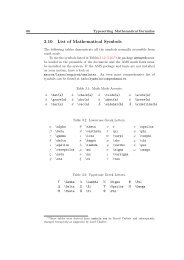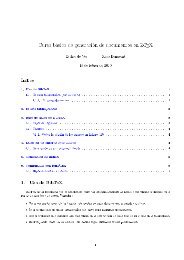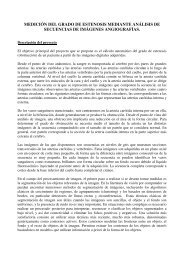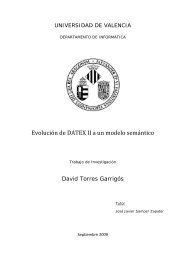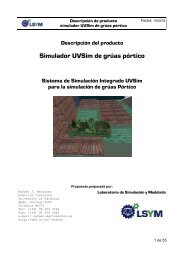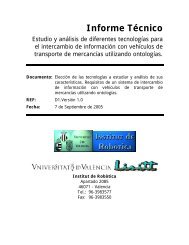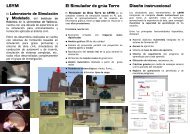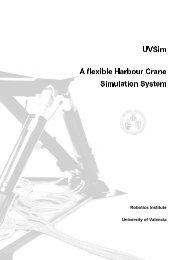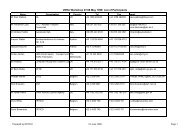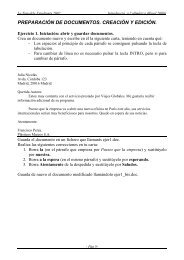Matemáticas para la Computación
Matemáticas para la Computación
Matemáticas para la Computación
You also want an ePaper? Increase the reach of your titles
YUMPU automatically turns print PDFs into web optimized ePapers that Google loves.
<strong>Matemáticas</strong> <strong>para</strong> <strong>la</strong> computaciónDept. d’InformàticaProblemas Universitat de ValènciaMultiplicando G 1 por A, obtenemos:⎛A 1 = G 1 A = ⎝√12− √ 120√112√2 00 0 1⎞ ⎛⎠ ⎝√2 1 1− √ 2 1 10 −1 1⎞ ⎛2 0 0⎠ = ⎝ 0 √2 2 √2 20 −1 1Segundo paso. Puesto que el elemento a 21 ya es cero, construímos <strong>la</strong> matrizde Givens que hace cero el elemento a 32 = −1 de A 1 :cos(θ) =a 22√a222 + a 2 32=2/ √ 2√(2/ √ = √ 22) 2 + (−1) 2 6a 32−1sin(θ) = −√ = −√a222 + a 2 32 (2/ √ = √ 12) 2 + (−1) 2 3⎛⎞1 0 02G 2 = ⎝ 0 √6 − √ 13⎠01 √3 2 √6⎞⎠Multiplicando G 2 por A 1 , obtenemos:⎛1 0 0A 2 = G 2 A 1 = ⎝ 0 √6 2− √ 1301 √3 2 √6⎞ ⎛2 0 0⎠ ⎝ 0 √2 2 √2 20 −1 1⎞ ⎛2 0 0⎠ = ⎝ 0 √612√2120 0 √6 4⎞⎠ = RPara obtener Q, multiplicamos <strong>la</strong>s matrices de Givens traspuestas:⎛√11 ⎞ ⎛⎞ ⎛√220 1 0 0Q = G T 1 G T 2 = ⎝ − √ 1 √2 120 ⎠ ⎝ 0 √6 2 √3 1⎠ ⎜= ⎝0 0 1 0 − √ 1 √6 23√1√3 1 √6 12− 1 √21 √3 1 √60 − 1 √32 √6⎞⎟⎠Respuesta al Ejercicio 30(a) Aplicamos el método de eliminación gaussiana básica. Elegimos el primerpivote p 21 = a 21 /a 11 = 6/3 = 2, multiplicamos <strong>la</strong> fi<strong>la</strong> 2 por elpivote y restamos el resultado a <strong>la</strong> fi<strong>la</strong> 1. Después multiplicamos <strong>la</strong> fi<strong>la</strong>39



